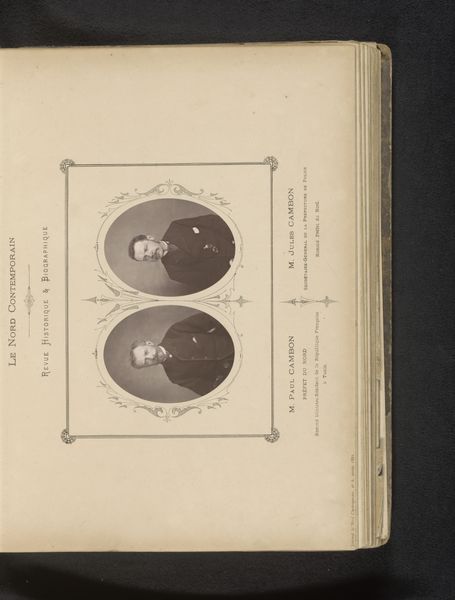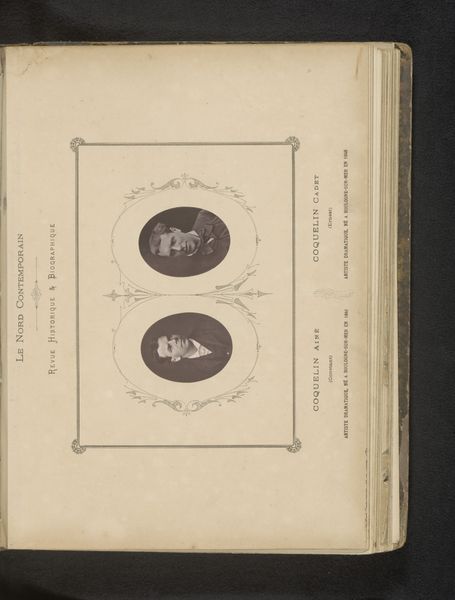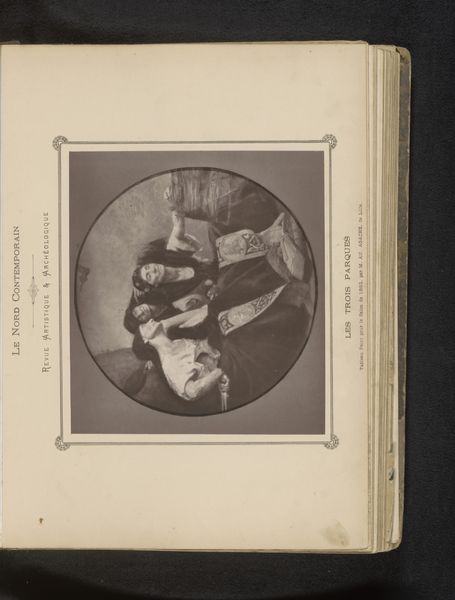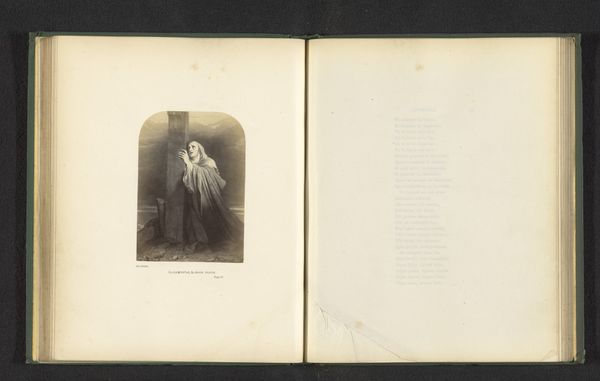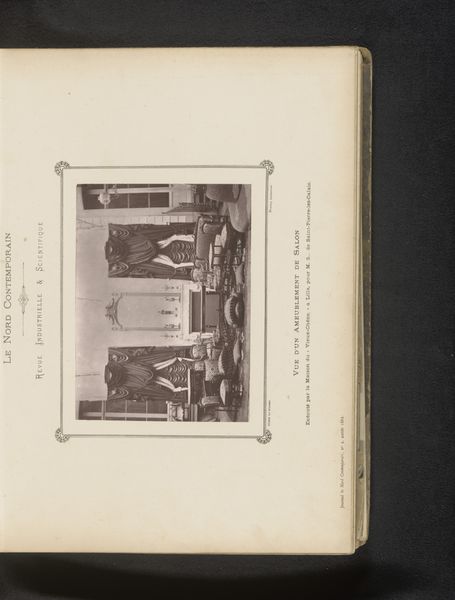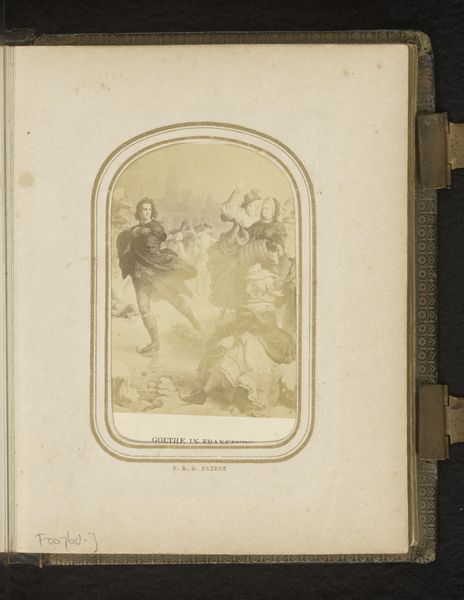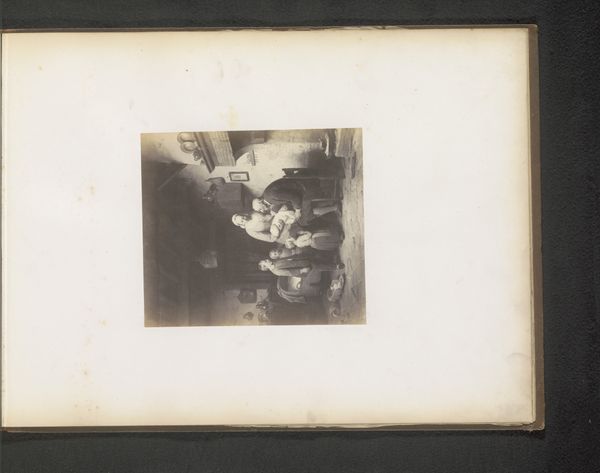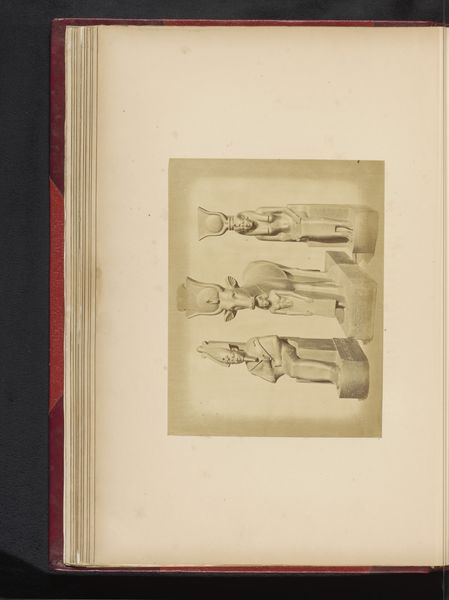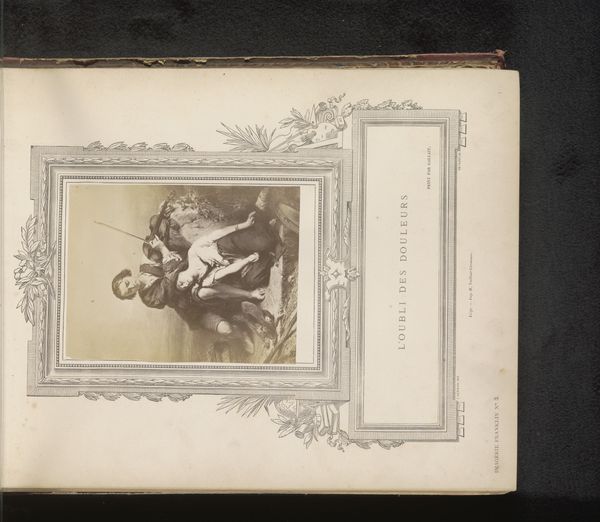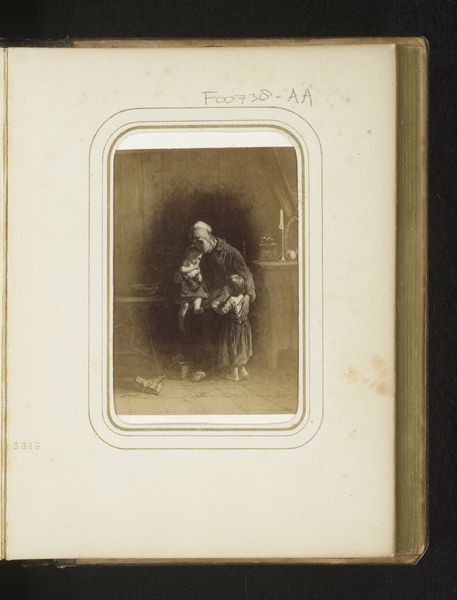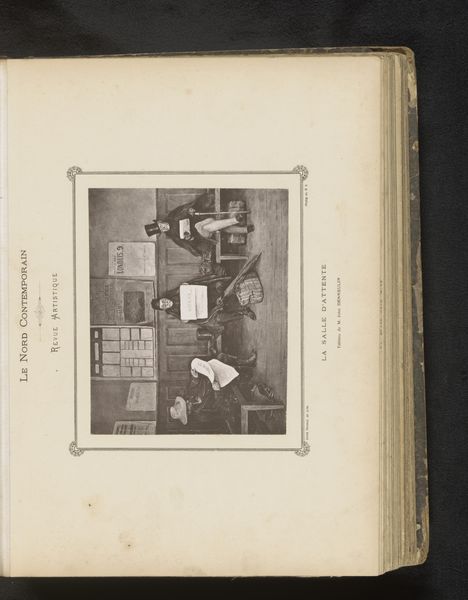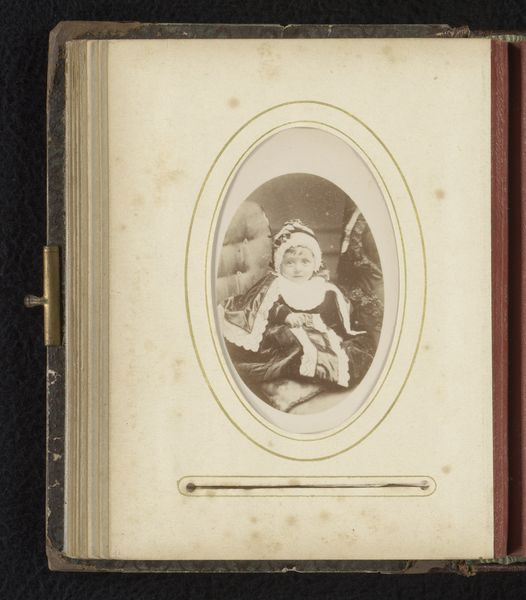
Reproductie van een portret van Charlemagne-Joseph Ovigneur, commandant van de artillerie tijdens de belegering van Lille door de Oostenrijkers in 1792 before 1882
0:00
0:00
photography
#
portrait
#
photography
#
history-painting
#
academic-art
Dimensions: height 90 mm, width 58 mm
Copyright: Rijks Museum: Open Domain
Curator: Looking at this photographic print, one is struck by its sombre tone and almost archaic presentation. We have here a reproduction predating 1882 of a portrait featuring Charlemagne-Joseph Ovigneur, who commanded the artillery during the siege of Lille in 1792. The photographer is Lemercier. Editor: My initial reaction is that these side-by-side images are studies in authority, but tinged with vulnerability. Notice how the poses mirror each other, yet the figures differ in age and the expressions are far from identical. Curator: It’s a constructed presentation typical of Academic art; idealized in many ways while invoking civic responsibility. What I find interesting is the context of its creation, likely long after the events it depicts. We're viewing a reproduction in a book, and the choice to include it speaks to how the 1792 siege of Lille was viewed retrospectively, and Lemercier’s photographic role in that interpretation. Editor: The book is fascinating, providing a symbolic frame within which these portraits operate. Circles contain each head and suggest coins, medals, officialdom, but each emblem is unique: is one for when Ovigneur commanded, and the other when his reputation endured? Curator: Possibly, yes. The inclusion of this artwork, this specific reproduction, serves to reinforce historical narratives, casting Ovigneur in the light of a civic hero during a turbulent time for Lille and, indeed, France itself. Remember, this image comes well after the French Revolution and amidst France’s own project to define itself. Editor: Agreed. The choice of rendering in sepia gives it an almost dreamlike, distant quality; a memory burnished and made palatable. The symbols of authority are carefully presented; we have a portrait designed not just to inform, but to inspire a sense of continuity, perhaps to even reconcile France’s diverse political forces. The symbolism acts as a mnemonic device; a public commemoration of a specific, local kind of heroism, that asks who deserves to be memorialized and how. Curator: Absolutely, a carefully constructed visual argument contributing to a broader socio-political discourse. Editor: So much history quietly packed within what seems, on the surface, like a straightforward portrait. Curator: Indeed. A poignant snapshot revealing how nations grapple with their past, heroes are manufactured, and historical interpretations evolve.
Comments
No comments
Be the first to comment and join the conversation on the ultimate creative platform.
